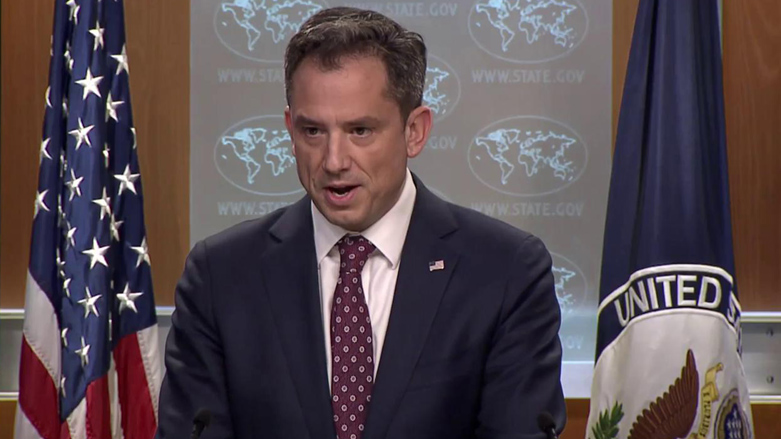US troops to stay in Syria safe zone, support ‘partners’ after drawdown

WASHINGTON DC (Kurdistan24) – State Department Deputy Spokesperson Robert Palladino affirmed on Tuesday that US troops would remain in the planned safe zone in northeastern Syria, even after the bulk of those forces are withdrawn.
Kurdistan 24 asked Palladino to clarify the remarks of Amb. James Jeffrey the day before, when Jeffrey, Special Representative for Syria Engagement and Special Envoy for the Global Coalition to Defeat ISIS, said there would be “no YPG (People’s Protection Units) forces” in the safe zone, while the mission of the remaining US forces was “not to operate in any safe zone.”
So what force (or forces) is supposed to ensure the safety of the safe zone?
“We’re going to have a small residual force of the United States military,” Palladino said. “They’re going to remain in northeast Syria, and that will be as part of a multinational force.”
Thus, the US will be staying in Syria, along with troops from other countries. So what other countries might they be? Presumably, the same countries that have forces there now: France and Britain.
The multinational force “will be there to prevent an ISIS resurgence,” Palladino continued. A key phrase then followed as he added, “and related to that, to provide support” and “stability in northeast Syria so that our partners (emphasis added) can do everything to maintain pressure on ISIS and those networks that exist.”
Thus, the multinational force will have “partners.” So who will those partners be? Presumably, the same people who are partners now to the US, French, and British troops—the Syrian Democratic Forces (SDF.)
However, when Kurdistan 24 asked Palladino directly whether the SDF would be involved in securing the safe zone, he declined to answer, as he also declined to answer if Turkish troops or Turkish-backed militias would be involved.
“We’re consulting,” Palladino replied. “We are planning proactively with other members of the global coalition who have identified their intent to support this transition phase of operations in Syria.”
On Monday, Jeffrey had said that Ankara’s view of the YPG as the Syrian branch of the PKK (Kurdistan Workers’ Party) was the reason why YPG forces would be excluded from the safe zone. His statement made headlines in the Turkish press, where it was much welcomed. But the only viable partner for the multinational force in the safe zone is the SDF. So how can the YPG be separated from it?
The Washington-based Turkish journalist Ilhan Tanir called it a “juggling act,” as Jeffrey appeared to make seemingly contradictory promises to each side. “But for now, the juggling act seems to be the only way forward, at least until Turkey’s local election” on March 31, Tanir suggested.
Possibly, despite Jeffrey’s statements, the safe zone will not prove so different from what was first understood: an area along the Turkish border, with US, British, and French forces stationed there to prevent clashes between Turkey and the SDF, including its military leadership, the YPG.
Still, it remains to be seen just how, or even if, the US will succeed in resolving the fundamentally conflicting positions of Turkey and the YPG. If the US cannot do so, then Russia is waiting in the wings to broker some sort of deal between Damascus and the Syrian Kurdish leadership.
Of course, Ankara knows that as well, and the question for Turkey and its imperious president may well be which power it prefers as the guarantor of peace and quiet on its southern border: the US or Russia.
Editing by Nadia Riva
